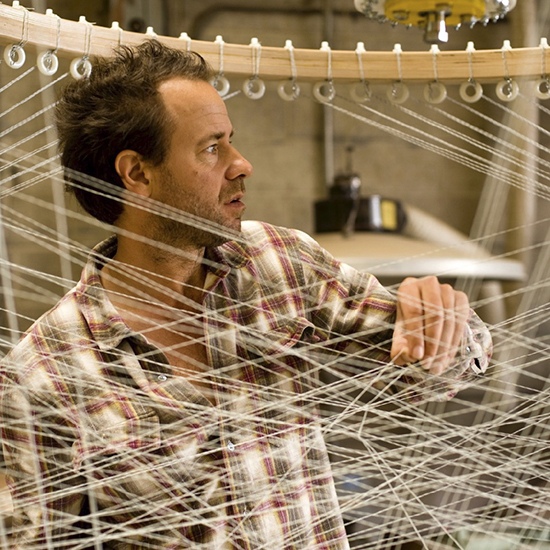
Harmonizing Art, Nature and Mathematics: The Captivating Kinetic Sculptures of Reuben Margolin
Reuben Margolin, an acclaimed artist renowned for his captivating kinetic sculptures, seamlessly blends his love for nature, mathematics, and creative expression. Growing up in Berkeley, California, Reuben’s childhood was filled with outdoor adventures and crafting wooden creations, igniting his lifelong fascination with the intricate beauty of the natural world.
Combining his passions for art and mathematics, Reuben developed a unique style that harmoniously integrates nature and math in his mesmerizing sculptures. From studying light and shadow at the Charles Cecil Studios in Florence, Italy, to exploring volumes and mass at the Saint Petersburg Academy of Art in Russia, Reuben’s formative experiences shaped his ability to observe and understand the interplay of elements, allowing him to create fascinating sculptures that enlighten their surroundings.
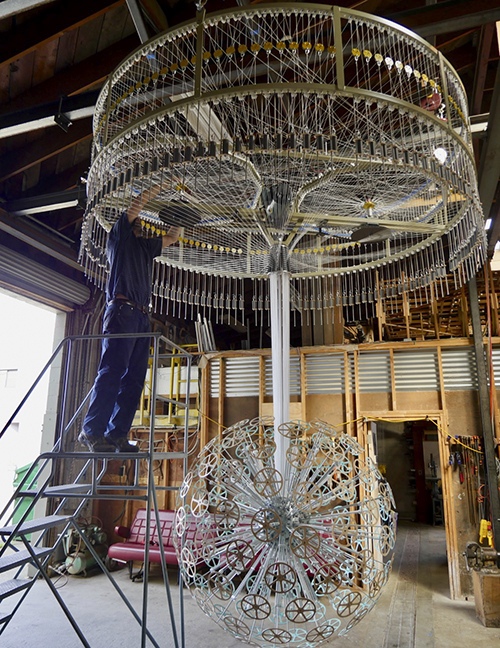
We are delighted to have the opportunity to interview Reuben Margolin and delve into the fascinating world of his. Join us as we explore the intricate artistry and imaginative vision behind his remarkable sculptures.
Q: Please tell us about your background and training as an artist? How did you develop your unique style of combining nature and math in kinetic sculptures?
A: I grew up in Berkeley, California, in the 1970’s. My parents liked camping so we spent a lot of time outdoors. I was always making stuff out of wood, for example a pair of stilts, a duck marionette, and even a trailer so I could tow our canoe with my bicycle. We have all experienced those rare moments when nature breaks through the ordinariness of everyday life, and we see something beautiful and even mysterious. I also like math and enjoy the challenge of describing natural patterns as sets of equations. Mix all this up, and you get kinetic sculptures inspired by nature and math!
Q: What inspired you to transition from studying math and English to pursuing a career in art? How did your early experiences with woodworking and drawing influence your artistic journey?
A: I liked math in high school, especially doing those geometric constructions with a compass and straightedge. I started Harvard as a math major, but I also liked the outdoors, and changed majors to geology because I wanted to go camping, then to anthropology because I wanted to go traveling, and finally to English because I wanted to be a poet. However, going back even earlier, I always liked making stuff, and when I had exhausted all other possibilities, I figured maybe I was an artist and if so I had better learn how to draw.
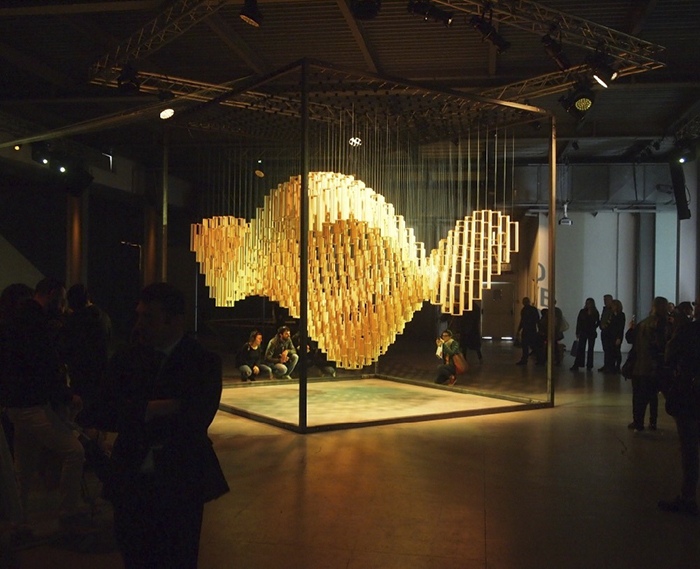
Q: Please describe your time studying in Italy and Russia? How did these experiences shape your artistic approach, particularly in terms of observing light and shadow and constructing volume based on knowledge?
A: I spent time at two realistic painting schools, the Charles Cecil Studios in Florence, Italy, and the Saint Petersburg Academy of Art in Russia. The Italian school taught how to draw what you see. We spent days studying the shadows and highlights in plaster casts and I loved every minute of it. When I went to Russia I discovered that they were drawing from a different part of the human experience by constructing volumes and mass from knowledge of anatomy. It was a revelation to realize there were two different, equally valid ways of looking at the world and I use them both.
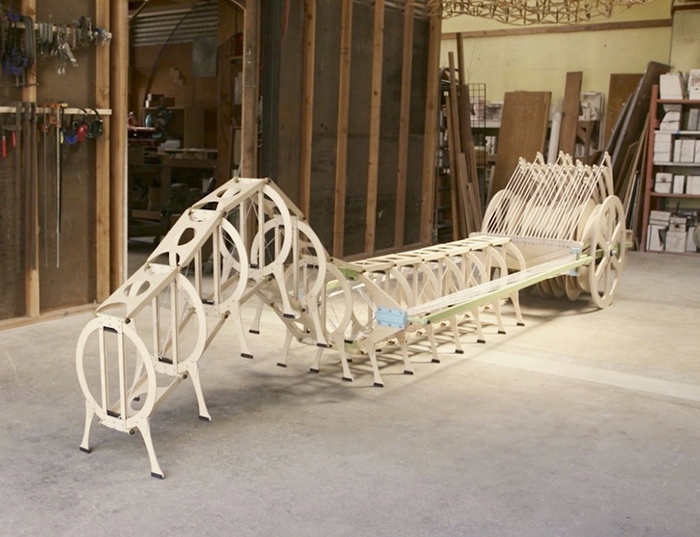
Q: Please share your experience during your residency at Orchardton House in Scotland? How did the encounter with a green caterpillar inspire your interest in kinetic sculpture? What motivated you to explore the movement of caterpillars and butterflies?
A: The artist residency at Orchardton House was super fun. There were about 40 artists, musicians, wood and iron workers who all lived communally in a huge stone mansion in the Scottish countryside. Every day I would walk out to the coast and admire the beautiful cliffs and mudflats. After several months of painting, I began to have the craving to work with wood, and also do some math problems. There was a part of my mind that I wanted to use that wasn’t coming out in painting. I thought of the wavelike motion of a caterpillar I had seen years earlier on a hike in Utah, and thought I’d spend a few weeks working out the math and making one. Little did I know it would change the direction of my life. I’ve spent the last 25 years working on wave and caterpillar sculptures.

Q: How did your residency in Ahmedabad, India influence your artistic direction? How did working with artist Dashrath Patel shape your understanding of directing the viewer’s eye towards moving parts in a sculpture?
A: Shortly after completing my first caterpillar I got a chance to study in Ahmedabad with Dasrath Patel, a well known photographer and artist. I accepted a residency that included a large sculpture studio and I became fascinated by the vitality I saw on the neighboring streets. I bought three pedal rickshaws and a lot of bamboo and learned how to hand dye muslin in order to make three pedal-powered butterflies. The butterflies seemed like a natural thing to make after caterpillars. I clearly remember Dashrath coming over one day and saying that I should paint every other link of the bicycle chain a different color so that people could see the chain movement. It’s a wonderful idea to call attention to the moving parts of the sculpture and let the static parts recede. I’ve tried to do that ever since.
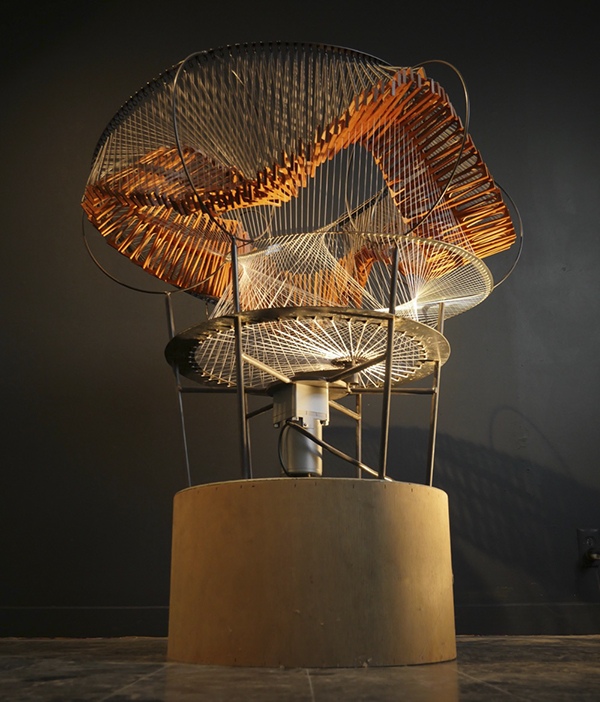
Q: What draws you to using analog cams, levers, helices, and pulleys in your sculptures? How do these physical geometries contribute to the elegance and embedded meaning of your artwork?
A: What I really love about analog mechanics is that they are continuous. It always bugs me that digital motion is, at its heart, discrete. There may be so many divisions that you don’t see the increments, but you know they are there. With cams, helices, levers and the like, movement can be continuous which leads to a high degree of fluidity. Plus, I just like the machining and fabrication challenges of making analog parts. I keep my sculptures transparent so people can see the mechanics and thus see the math that is behind the movement.
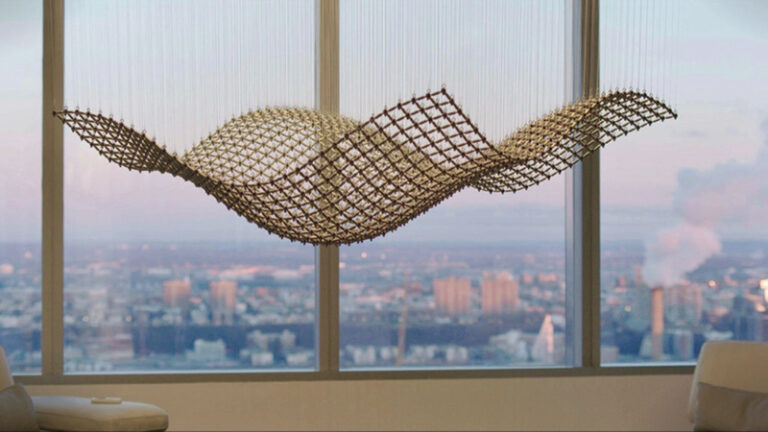
Q: Please discuss the significance of working on suspended sculptures, such as the Square Wave and the Spiral Wave? How did the challenge of achieving smooth motion and a sense of continuous flow lead you to explore sculptures in a suspended form?
A: I feel super lucky that twenty years ago I moved into a studio with high ceilings. I’m really not sure what would have happened if I had moved into a different space. The suspended sculptures came about because I was having a hard time creating the fluidity I wanted with the caterpillars. A caterpillar walks on the ground, and the ground constrains movement. It occurred to me that if I made a suspended waveform it would remove that constraint and I could increase the fluidity.
Q: As an artist who has received commissions for sculptures, how do you approach the creative process when designing for specific spaces or environments? How do factors like movement, scale, material, transparency, and lighting contribute to the presence of your sculptures in their surroundings?
A: I love working on commission. Sometimes it’s easier to design if you are given certain spatial constraints. Otherwise, how are you supposed to know how big to make something? Or what material to make it out of? There can be too many choices. If possible, I visit the space, if not I’ll look at renderings or drawings. I think about where the light is coming from, where the vantage points are, what the material palette of the space is in order to design a sculpture that compliments the space and that flows from the architecture. Transparency is important because I want the sculpture to have enough presence, but not too much. For large commissions it’s also fun to work with the building’s structural engineer, architect, and lighting designer to make something beautiful that is at home in the space.
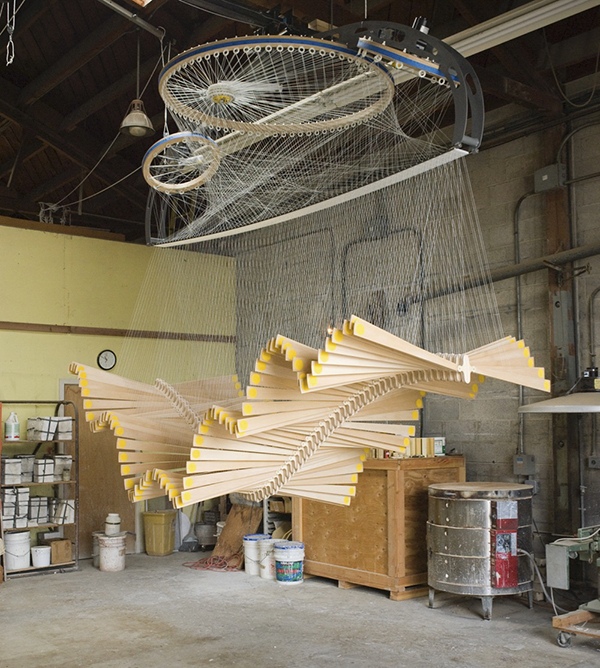
Q: Lastly, please tell us about your current work and any new designs or projects you’re currently exploring? How does your understanding of art and math converge as you continue to create kinetic sculptures?
A: For many years the narrative I told myself was that I started with caterpillars, then moved on to butterflies, then finally water. This narrative has a direction toward abstraction that made sense to me. But then I started making caterpillars again and that messed up my narrative. Now I think I’ve always been making waves. This is a better narrative because it allows for going backwards or forwards or in any other direction. I think in one form or another I will always make waves, whether they walk on the ground, or swim in the air.
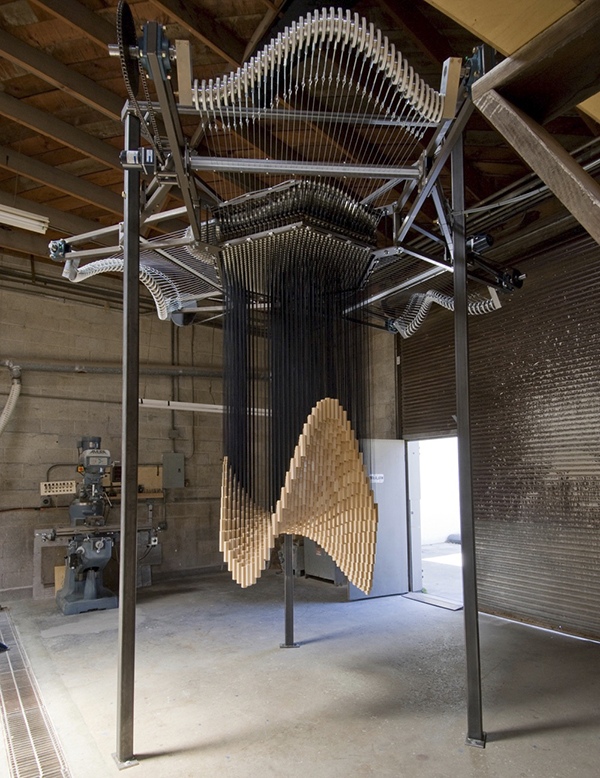
In conclusion, Reuben Margolin’s ability to infuse life into simple materials and create captivating works of art is truly remarkable. We are privileged to have gained insights into his artistic process and to have explored the enchanting world of his theatrical sculptures.
Reuben’s video links:
Filament and Mobius Wave with Commentary
Reuben’s Instagram